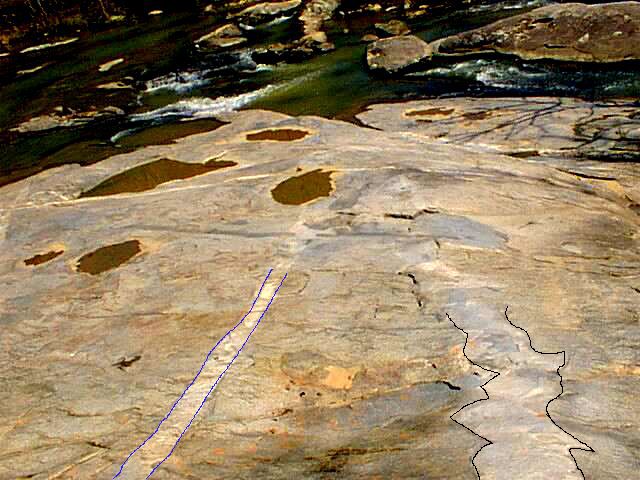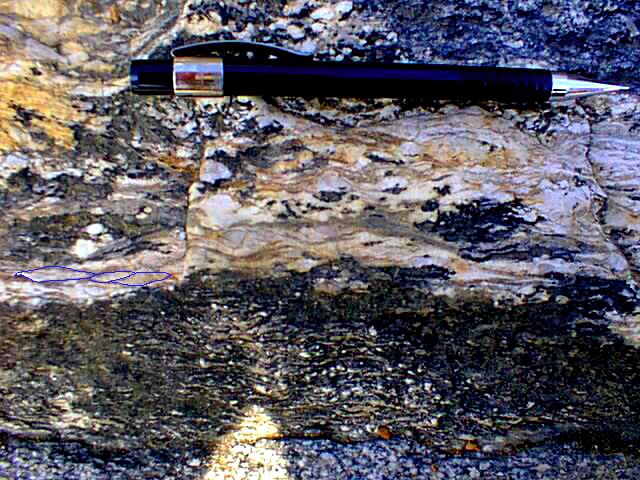Day 2, Stop 1 Elkahatchee Creek |
| The
Elkahatchee Creek area contains multiple
intrusions into a quartz-diorite. The intrusions
include numerous dikes, veins, and pegmatites.
The class mapped the surface expression of these
intrusions to determine age relationships based
on cross-cutting relationships. (1) Xenoliths fell into the magma chamber and were compressed during an orogeny. (2) Massive quartzite viens were emplaced, that were later foliated. (3) A final series of quartzite veins were injected, followed by a series of felsic dikes. The orientation of principal stresses changed over time. During the Acadian orogeny the maximum principal stress was directed in a east-west direction. During the Alleghanian orogeny the maximum principal stress was directed in a northwest-southeast direction. Shearing upon the area caused small-and-large-scale deformations within the intrusions.
This picture shows two dikes on the outcrop. The intrusion on the left (outlined in blue) has not been compressed as the dike on the right (outlined in black) has. After the dike on the right had cooled, it was compressed from end to end, giving it the kinked layout it now has.
The blue outlined areas on the left side of the photograph are small-scale shear indicators. Here they indicate right lateral shear. |

